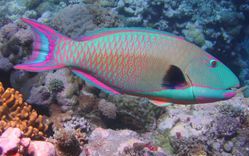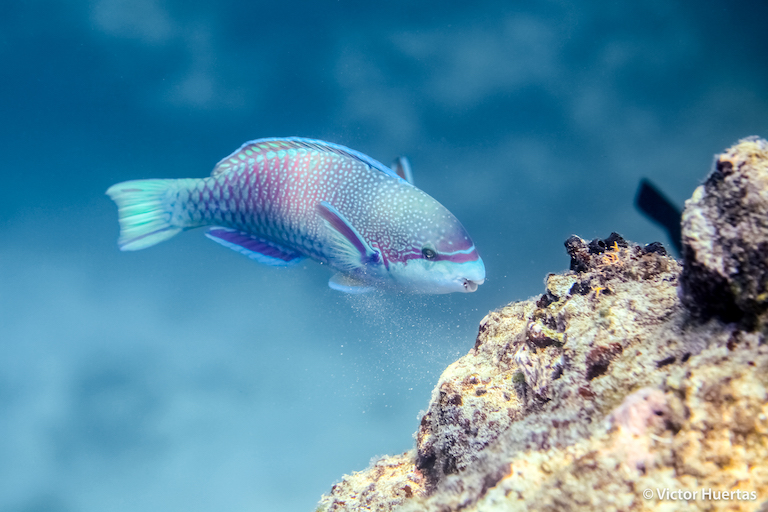The good folks over at Coral Sea Foundation have uncovered an interesting paper on parrotfish that challenges the existing norms on their role on the reef. Until now, Parrotfishes (Family Scaridae) were thought to be herbivores that eat algae and help prevent it from overgrowing corals. Algae is bad for corals and a reef smothered in algae is believed to be one that is unhealthy and out of ecological balance. Protect the algae grazers therefore and you will go a long way to protecting coral reefs themselves.
But when fish biologists Professor John Howard Choat, Dr. Kendall Clements, and Georgina Nicholson looked more closely at parrotfish diets they found that parrotfish are specifically targeting tiny microorganisms, filamentous bacteria, and cyanobacteria that live on, and underneath, the surface of the reef. These tiny organisms are photosynthetic and the parrot-like beak may have evolved to help them scrape those nutritious sub-surface bacteria off the bare, exposed areas of the reef. So the more exposed, coral-free areas of the reef, the more real estate is available for parrotfish species to feed on.

A survey from the northern Great Barrier Reef in 2016-17 recorded a severe bleaching event that was catastrophic for reef-building corals, but at the same time provided an opportunity for the parrotfish population which boomed, as all those dead skeletons started to foul up and coat in the microorganisms upon which they graze. And as the corals have recovered and started to colonize and shade out those exposed surfaces once again, the parrotfish population in the area has declined.
Coral Sea Foundation has also noted that parrotfish don’t like turbid water. The masking of sunlight and particulate matter in the water does not encourage the filamentous bacteria and cyanobacteria on which they feed, so there are fewer of them in those areas.



